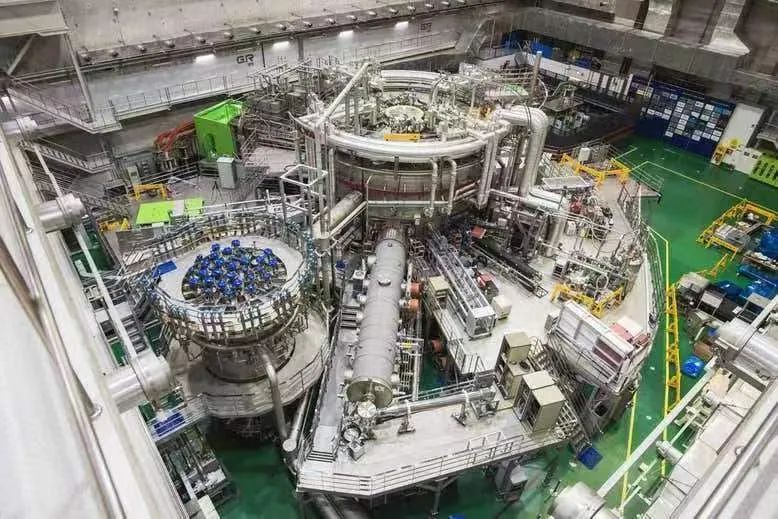Nature: 30 seconds, 100 million degrees!
Author:Journal of China Science Time:2022.09.09
Text | Xu Rui

KSTAR Picture Source: Korea Energy Technology Research Institute
Most scientists believe that feasible nuclear fusion reactions still take decades of development. But the understanding and results of nuclear fusion are constantly increasing.
Now, the Yong Su Na and colleagues of the National University of Seoul, South Korea, have lasted for 30 seconds at a nuclear fusion reactor at a temperature of more than 100 million degrees Celsius. Related studies were published on September 7 in "Nature".
A 2021 experiment produced a nuclear aggregation reaction energy that was sufficient to maintain itself, and the concept design design of the business reactor was also being drafted. At the same time, the work of the international thermal nuclear fusion experiment (ITER) is still advancing.
In the new research, although its duration and temperature have not been recorded, it remains stable while reaching the required heat, making people a step closer to the feasible fusion reactor. Of course, the technology used is that the technology used can expand the scale Essence
In the process of achieving the above reaction, the control of the ionic body is essential. Once the plasma is exposed to the wall of the reactor, it will be cooled quickly, damaging the chamber while suppressing the reaction.
Researchers usually use various shapes of magnetic fields to accommodate plasma. Some people use the edge transmission barrier (ETB) to shape a "steep slope" with pressure near the reactor wall to prevent heat and plasma from reaching out. Some people have higher pressures near the plasma center through the internal transmission barrier (ITB). But both will cause unstable reaction.
In order to increase the energy generated by the reactor, the plasma will make the plasma very hot, dense, or increase the restriction time to the ion.
The NA team uses improved ITB technology on the Korean superconducting Toccamak nuclear fusion device (KSTAR) to achieve lower plasma density. Their methods seem to increase the temperature of the core plasma and reduce the edge plasma temperature, which may help extend the life of the reactor component.
NA pointed out that low density is the key, and the core of the plasma core or more energy -so -called fast ion regulation enhancement (Fire) is the key to maintaining reaction stability. But the team has not fully clarified the mechanism.
Due to the limitation of hardware, the response stops after 30 seconds, and it may last longer in the future. KSTAR has now closed for upgrading, and the carbon on the reactor wall will be replaced by tungsten. NA said that this will improve the repetitiveness of the experiment.
"The NA team found that lower density restrictions on the ionic body may not be a bad thing, because it can be compensated by the core of the core." Said Larger equipment and projects, such as ITER, still have great uncertainty.
Related thesis information:
https://doi.org/10.1038/s41586-022-05008-1
"China Science News" (2022-09-09 The 2nd Edition of the International Title "South Korea's nuclear fusion reactor reaches 100 million degrees Celsius 30 seconds")
Edit | Zhao Lu
Capture | Zhihai

- END -
2022 Taobao Live Ceremony | Zixuan E -commerce and its anchor big coffee won two major awards

On September 1st, the 2022 Taobao Live Ceremony on the theme of Thousands of Saili...
It's it!Northwestern University of Technology was found by the most direct "culprit" of the American network attack

Global Times reporter learned from the relevant departments on the 13th that in th...